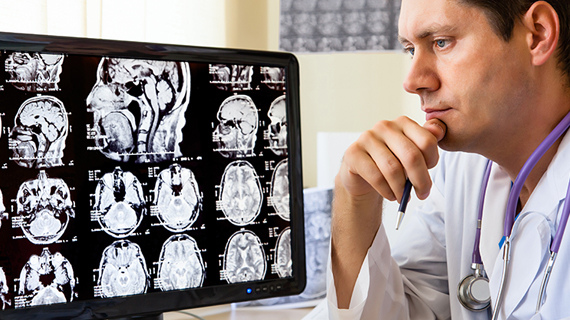Diagnostic Methods
Diagnostic Methods
In recent years, the "laboratory arsenal" that serves to diagnose cancer and monitor the therapeutic response of our patients, is expanding more and more. New tests and improvements in older tests, so that they become more sensitive and more specific, are constantly appearing. This obviously gives new hope to our patients, as the gain of each day can mean something better in the therapeutic methods. The cutting-edge technology we're talking about is a key element of personalized oncology, and Cancer-Therapy expresses this trend.
Blood tests
In addition to general purpose tests, which are also necessary, neoplastic markers (cancer markers) are very useful. These are biochemical agents of various classes, produced by different types of cancer. Their specialty is not satisfactory, because they also occur in cases of inflammatory diseases. In general, cancers are characterized by very high levels of cancer markers, while inflammation is not. However, attention needs to be paid to the interpretation of the positive finding. Cancer markers are sought in the suspected cancer stage (before diagnosis), and in the post-treatment follow-up phase.
The most commonly used neoplastic markers are:
- Cancer embryonic antigen (CEA). It is normally produced during fetal life by the developing gastrointestinal tract. After birth, there is a downward trend, but smokers keep it high. Pathologically elevated, it is found in intestinal and lung neoplasms, and in metastatic disease it increases even more. With successful treatment it becomes normal again. Therefore, it is useful in monitoring for relapses of the disease.
- Alpha fetal globin (AFP). It is normally produced by the liver of the fetus. Pathologically elevated is found in liver neoplasms and Germ Cell tumors. In cases of pregnancy with fetal pathology may increase.
- Chorionic goodotropin (HCG). It is normally produced and gradually rises to the beginning of pregnancy. It is a diagnostic criterion for pregnancy. It is used to diagnose trophoblastic tumors in non-pregnant women, choriocarcinomas and gestational apples.
- Cancer antigen 15-3 (CA15-3). Useful in the diagnosis of breast cancer and its metastases. It can also increase in liver disease. The MCA and CA indices are also related
- Cancer antigen 19-9 (CA19-9). Useful in the diagnosis of cancer of the rectum and colon, pancreatic and gastrointestinal cancer. The CA index is also relevant
- Cancer antigen 125 (CA125). Useful in the diagnosis of ovarian and adenocarcinoma cancers. However, it is often elevated in endometriosis, liver cirrhosis, pregnancy, etc.
- Special prostate antigen (PSA). It has a great specialty for prostate diseases, from simple inflammation to cancer, which is often associated with very high values, without this being absolute. Antiandrogen therapy lowers the price. Normally elevated is found after sexual activity and finger examination.
In addition to the above, which are more specialized and more sensitive indicators, there are others, less easy to use, but they can also be useful under certain conditions: For example, the cancer antigen 72-4 (CA72-4) for stomach cancer, the Squamous cell carcinoma (SCC Antigen) for upper respiratory and lung cancers, specific neuron-enthallation (NSE) for neuroblastoma and micro-cellular bronchial bronchial cancer, β-2 microsphairin (B2-M) and LDH for lymphatic system malignancies, 5-hydroxy-indolex Acid (5-HIAA) is secreted by carcinoids, antidiuretic hormone (ADH) is secreted by small cell lung and adenocarcinoma cancers, bladder cancer (BTA) and others that are being investigated.
Conventional radiological examination
It never loses its value, because it is a cheap and good way of diagnosis in several cases, eg lung cancer (chest x-ray), breast (mammography) of the digestive (barium meal for the esophagus and stomach, barium enema for the intestine etc.).

CT - MRI
It is indicated in almost all forms of cancer. They complement each other and the conventional radiological examination. Many times you also need contrast media. They have great sensitivity and specialty.
Ultrasound examination
It is an easy, cheap, painless and radiation-free method with great sensitivity and specialty.
Radioisotope examination
It is done with radioactive isotopes and is a very useful method for the detection of various cancers, which preferably take a radioisotope, such as the thyroid gland, bone metastases, etc.
Cytological examination
The covering tissue of various organs was normally disinfected. By examining the microscopic secretions (urine, gastric fluid, etc.) or excrement or puncture products of these organs, properly processed, the experienced cytologist draws valuable conclusions. The cells that are observed as follows are graded as follows:
- Class I: Normal cells,
- Class II: Normal cells damaged by inflammation,
- Class III: Abnormal cancer cells, cancer suspition
- Class IV: Abnormal cells with a serious suspicion of cancer,
- Class V: Cancer cells. Negative cytology has no diagnostic value.
Histologyical examination
It is a microscopic examination of pieces of tissue, properly prepared and painted with special dyes each time. It makes the final diagnosis and is necessary for the initiation of toxic therapies. It gives information about the type of cancer, the degree of differentiation and how invasive it is. It largely determines prognosis and treatment. It contributes to the staging of the disease, along with imaging and clinical information. In recent years there has been great progress in the development of immunohistochemical agents, which differentiate neoplasms based on specific antigens they carry in their cell membrane. Immunohistochemistry is highly specialized.
Endoscopies
Advances in fiber optics have made it possible to examine cavities that were previously inaccessible. Endoscopy of the upper and lower respiratory tract and the urogenital system are offered for endoscopy. Endoscopies are usually done through natural mouths, but also by puncture. They are also very useful for easily obtaining material for cytological and histological examination.
Why in Personalized Oncology?
With personalization in oncology we are able to revive the patient's hope.
While we do not despise the therapeutic means of conventional oncology, on the contrary, we enrich the treatment....
More

